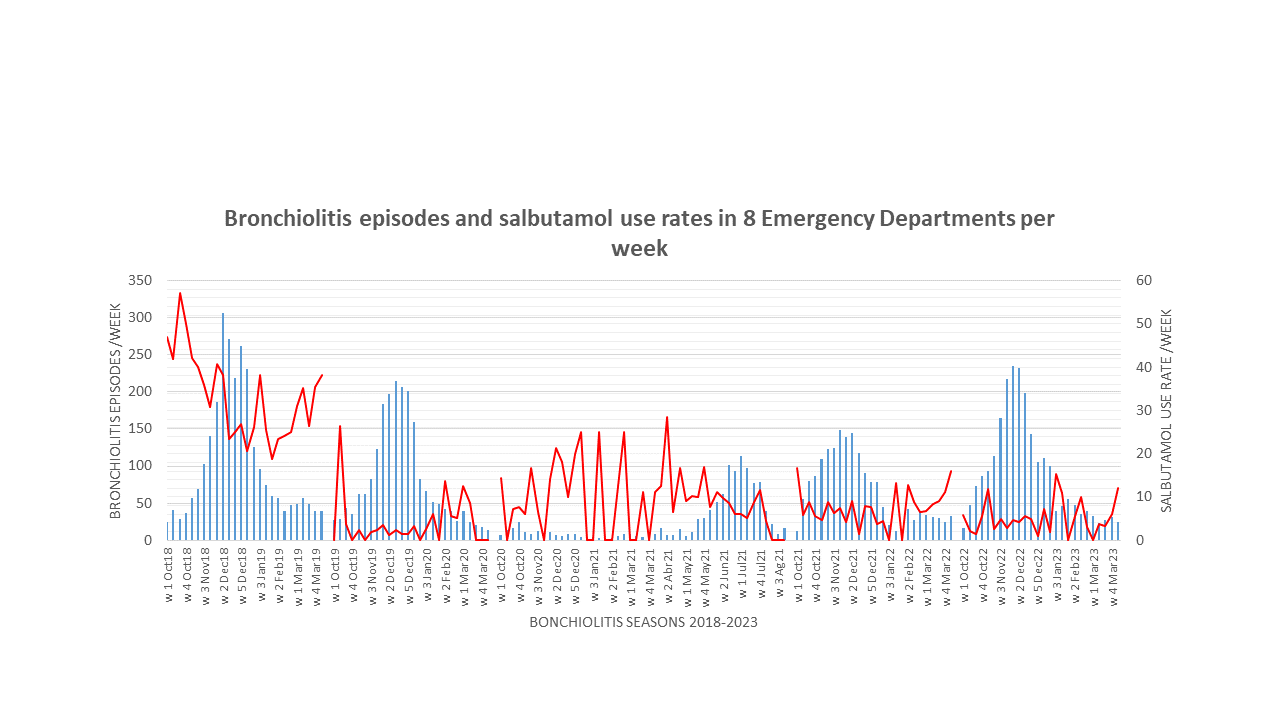Emergency Medicine
Session: Emergency Medicine 9: Respiratory
234 - Sustainability assessment of a quality improvement initiative on the management of bronchiolitis
Monday, May 6, 2024
9:30 AM - 11:30 AM ET
Poster Number: 234
Publication Number: 234.3074
Publication Number: 234.3074

Javier Benito, MD PhD (he/him/his)
Director Pediatric Emergency Departrment
Basque Health Service - Osakidetza
- Ninguno -, Pais Vasco, Spain
Presenting Author(s)
Background: A bronchiolitis integrated care pathway (BICP) achieved an 87% reduction in the use of salbutamol and other medications in emergency departments (EDs) and primary care (PC) centers of our regional health service (RHS) during the 2019-2020 season.
Objective: The objective of this study was to assess the sustainability of the changes on bronchiolitis management three years post implementation of BICP at our RHS.
Design/Methods: Observational study of the medication prescription rates in cases diagnosed with bronchiolitis in 135 PC centers and 8 hospital EDs in the Basque Country, Spain, during the three bronchiolitis seasons that occurred in the 2020-2023 period. During 2020-2023, the deployment of BICP-related actions continued in our RHS. The strategy designed for the sustainability of the results encompassed media campaigns, information, training and support for professionals, audit & feedback along with epidemiological surveillance.
The main endpoint was the percentage of children with a diagnosis of bronchiolitis that were administered (ED) or prescribed (PC) salbutamol. Secondary endpoints were percentages of administration or prescription of epinephrine (ED), antibiotics and corticosteroids (PC or ED) in the bronchiolitis episodes.
Results: 12,966 infants were diagnosed with AB in PC over the 2019-2020 to 2022-2023 epidemic waves (range 1,850 [2020-1] to 4,067 [2019-2020]) whereas 6,676 infants were attended at ED in the same period (range 1,002 [2020-2021] to 2,113 [2022-2023]). Salbutamol usage rates in PC over the four studied waves were 5.04%, 10.54% 8.51% and 6.05% respectively. Corresponding figures for ED were 3.36%, 10.02%, 7.62% and 5.77%. The RR of receiving salbutamol in the 2022-2023 wave as compared with the 2019-2020 wave was 1.07 (0.84-1.35) for PC centers and 1.79 (1.29-2.47) for ED. Epinephrine and corticosteroids usage at ED was 3.1% and 0.2% respectively in 2019-2020 and 0.3% (p < 0.001) and 0.4% (p=0.09) in the 2022-2023 wave. At PC, rates of prescription of antibiotics and corticosteroids were 5.1% and 1.8% respectively in the 2019-2020 bronchiolitis campaign and 5.7% (p=0.21) and 2.5% (p=0.02) in the 2022-2023 wave
Conclusion(s): The reduction in prescription of salbutamol and other medications for bronchiolitis episodes achieved in 2019 through the implementation of our integrated clinical pathway has continued over the three subsequent waves, with rates well below pre-intervention stages. There has been a slight increase in the use of salbutamol, though, especially in the 2020-2021 and 2021-2022 campaigns, heavily influenced by the SARS-Cov2 pandemic.
.png)

